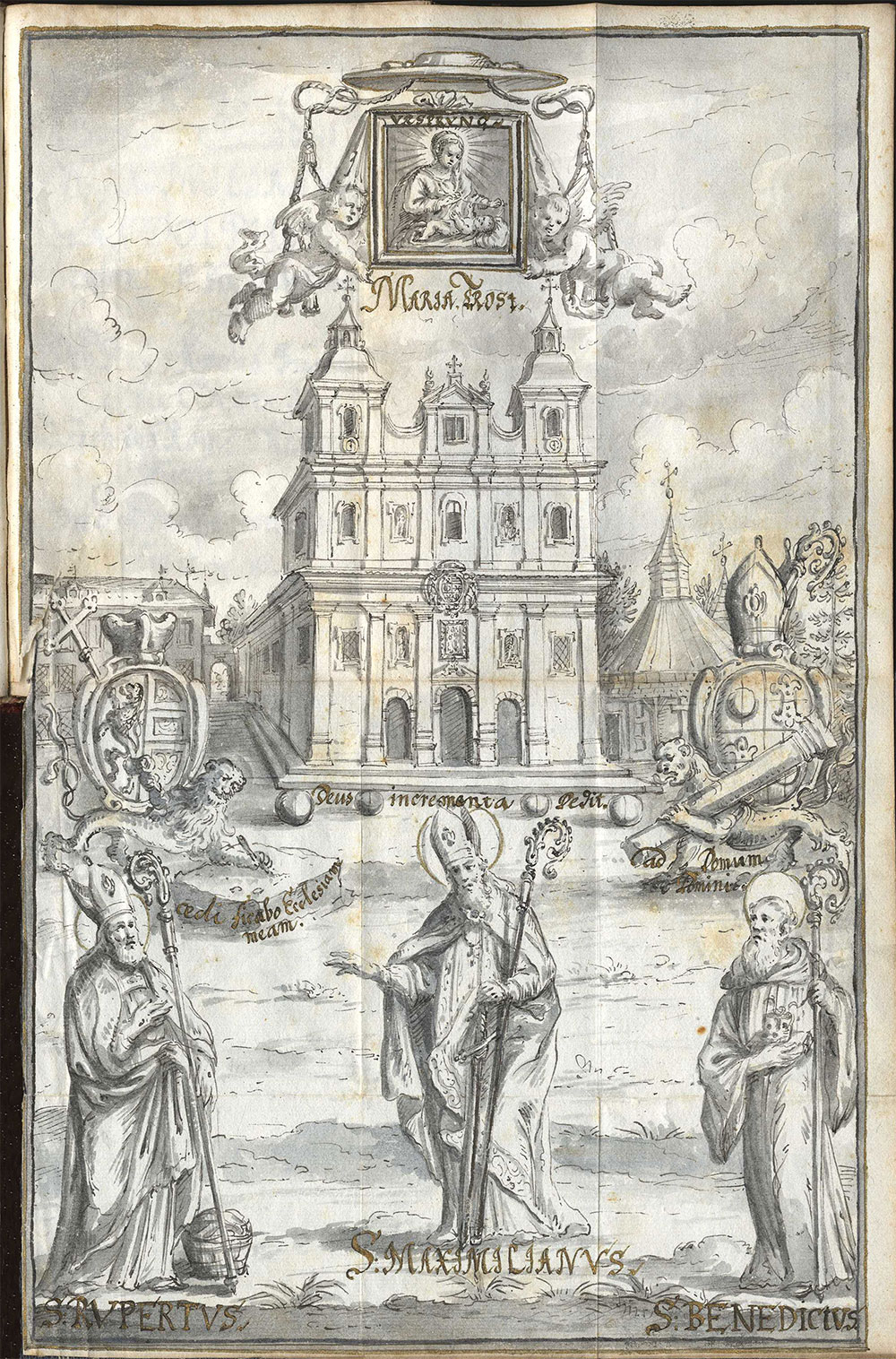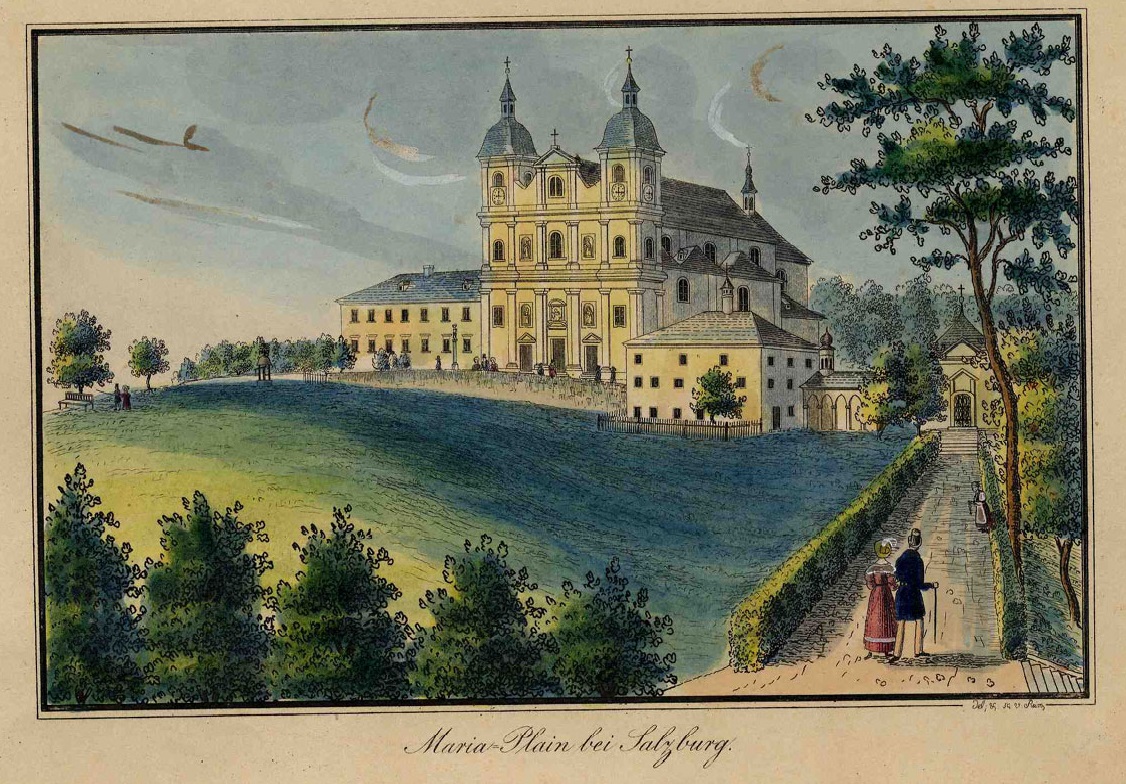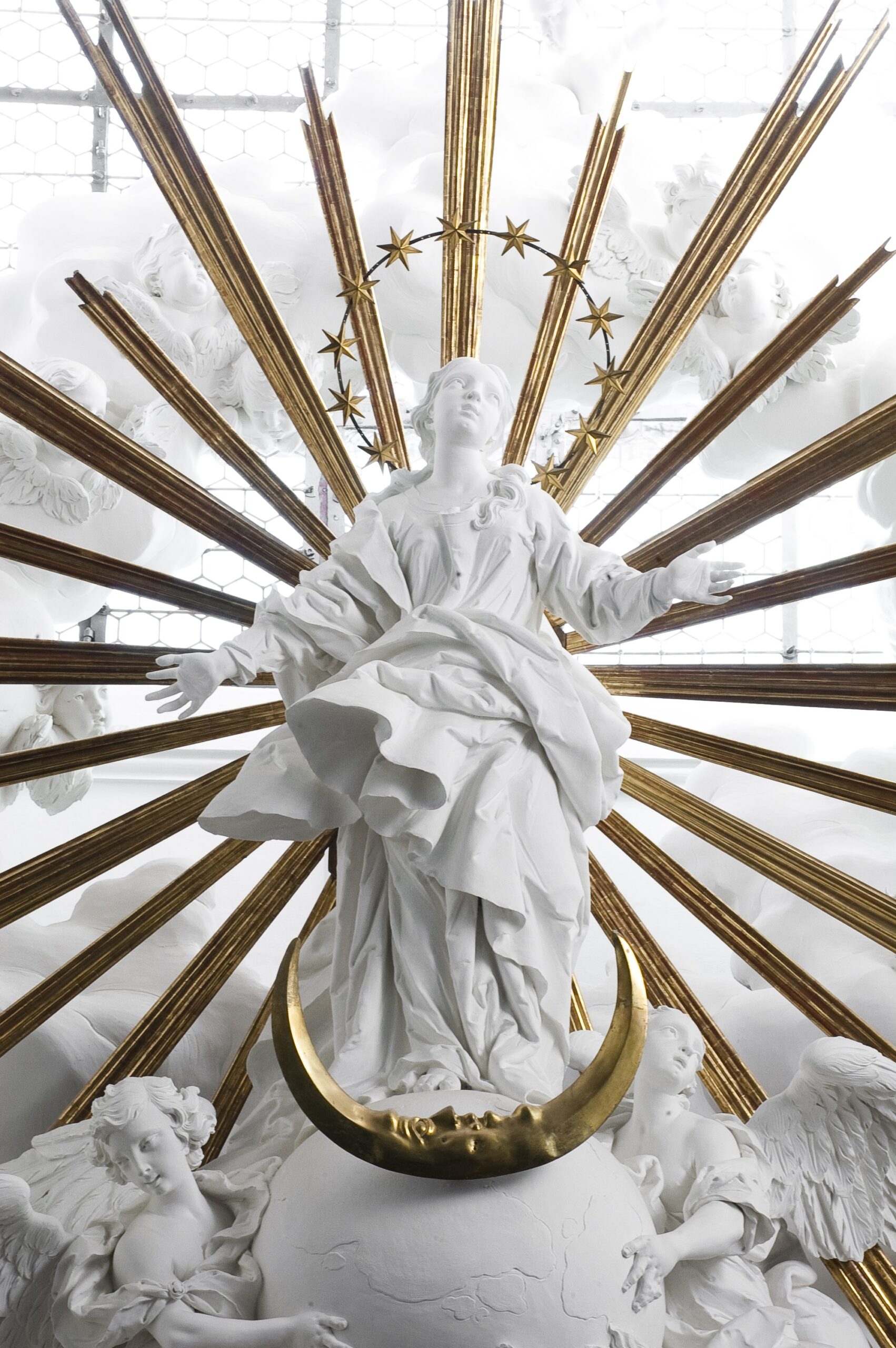Marian devotion
In the Baroque era, sustainability meant making provisions for life after death. Escaping purgatory was considered almost impossible, but pious works and prayers were supposed to shorten this “suspended hell”. Salzburg’s population wanted to come together in fraternities to help deceased members with their multiplied prayers. After the Lord’s Prayer, the Hail Mary was the most frequently spoken prayer. The Mother of God was highly venerated at the Benedictine University. The Secrets of the Rosary are illustrated in the Sacellum and the Great Auditorium; the famous miraculous image of the Virgin Mary is worshipped at the pilgrimage church Maria Plain, which the University owned at the time.
Johann Georg Nidermayr: Origin and History of the Pilgrimage Church of Maria Plain bei Salzburg, Salzburg 1674 (UBS, Sign. M I 66)
Pilgrimage church
In 1672, Salzburg's Prince-Archbishop Maximilian Gandolph Count Kuenburg laid the foundation stone for the pilgrimage church of Maria Plain, which he later transferred to the Benedictine University. Maria Plain served as a recreational place and a residence for retired university professors. According to the interim contract, Maria Plain would fall to the Abbey of St Peter after the closure of the Benedictine University in 1810.

Johann Vinzenz Reim: Maria Plain (UBS, Sign. G 1495 II)
Prayer and worship
Prayer and worship were expected to provide inspiration. In 1629, a university play told the story of Rupert von Deutz, who struggled with learning difficulties. After devout prayer, the Virgin Mary endowed him "with such a clever and sensible mind that he has been ranked among the leading theologians of the German nation in his time".

Stucco, Maria Immaculate, Salzburg, University Church
Maria Immaculate
The college students were grouped in the smaller congregation, the university students in the larger Marian congregation. On joining these prayer fraternities, the "sodalists" were entered in the ALBUM MARIANUM. In addition to a praeses as head of the congregation, there were preachers, assistants, consultors, orators, lectors, administrators for the sacred instruments, attendants for the sick and secretaries. The connection continued beyond graduation. At the beginning of each year, "xenia" were sent out with a greeting from the praeses and a list of the deceased.

Text: Christoph Brandhuber | Translation: Leonie Young, Diana McCoy
Photos: © PLUS, Universitätsbibliothek (1,2) | © Hubert Auer (3)





